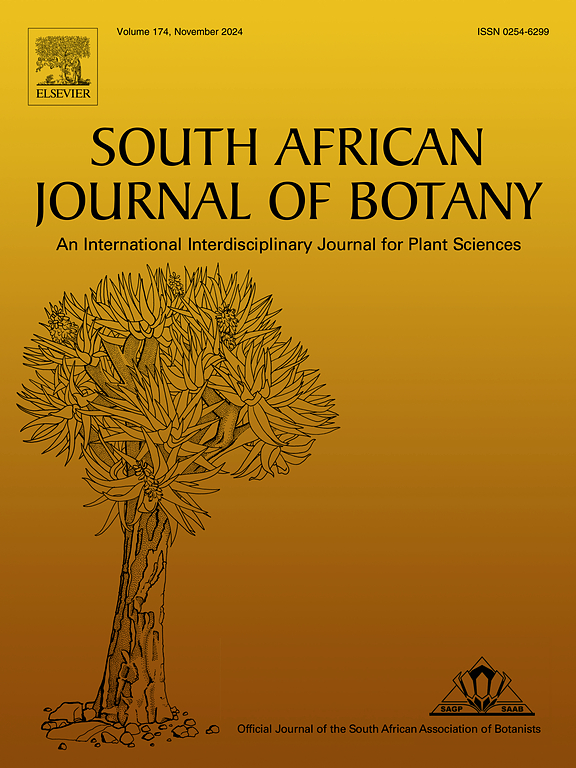追求一杯完美的路易波士和蜂蜜灌木-平衡“味道”和健康的挑战和策略
IF 2.7
3区 生物学
Q2 PLANT SCIENCES
引用次数: 0
摘要
Rooibos (Aspalathus linearis)和honeybush (Cyclopia种)是南非本土的fynbos植物,传统上用作药用草药茶。今天,它们因其独特的“味道”(消费者在提到味道时通常使用的一个术语)而受到欢迎,并被公认为“健康”饮料。这些茶的健康益处很大程度上归功于它们的高酚含量,特别是路易波士树中的芦笋素和蜜丛中的芒果苷,这是各自植物产生的主要多酚。虽然绿色的路易波士和蜂蜜灌木含有更高水平的芦笋素和芒果苷,但它们的味道氧化的同类产品,红色路易波士和棕色蜂蜜灌木,通常受到消费者的青睐。加工过程,特别是生产红路易波士和棕色蜜丛的必要氧化步骤,显著影响一杯茶的感官特征和多酚水平。绿茶的储存也会导致芦笋素和芒果苷的流失。因此,本综述的主要焦点是讨论在路易波士和蜜丛中最大化理想的感官特性和保持高水平的生物活性酚类物质之间的权衡。强调了在加工和储存过程中限制多酚氧化的挑战,以及所采用的策略,包括植物育种和收获以获得最佳质量和生物活性含量。该审查还审查了饮料产品中其他成分的影响。一个简短的部分集中在纳米包封和络合的路易波士和蜂蜜灌木提取物。需要详细说明具体的凉茶(种);氧化状态)和样品制备方法用于健康相关的研究,使研究结果的比较突出。该综述总结了对未来研究的建议,以帮助南非凉茶行业满足消费者对茶的需求,不仅“味道”好,而且还提供健康和保健益处。本文章由计算机程序翻译,如有差异,请以英文原文为准。
Aiming for the perfect cup of rooibos and honeybush – Challenges and strategies in balancing “taste” and health
Rooibos (Aspalathus linearis) and honeybush (Cyclopia species) are indigenous South African fynbos plants traditionally used as medicinal herbal teas. Today, they are enjoyed for their unique “taste” (a term commonly used by consumers when referring to flavour) and are recognised as “healthy” beverages. The health benefits of these teas are largely attributed to their high phenolic content, particularly aspalathin in rooibos and mangiferin in honeybush, which are the main polyphenols produced by the respective plants. Although the green variants of rooibos and honeybush contain higher levels of aspalathin and mangiferin, their flavourful oxidised counterparts, red rooibos and brown honeybush, are generally preferred by consumers. Processing, particularly the essential oxidation step in the production of both red rooibos and brown honeybush, significantly impacts the sensory profiles and polyphenol levels of a cup of tea. Storage of their green teas can also lead to the loss of aspalathin and mangiferin. The main focus of this review is thus a discussion of the trade-offs between maximising desirable sensory properties and retaining high levels of bioactive phenolics in rooibos and honeybush. Challenges in limiting polyphenol oxidation during processing and storage, and the strategies employed, including plant breeding and harvesting for optimal quality and bioactive content, are highlighted. The review also examines the impact of other ingredients in beverage products. A short section focusses on the nanoencapsulation and complexation of rooibos and honeybush extracts. The need for detailed descriptions of the specific herbal tea (species; oxidation status) and sample preparation methods used in health-related studies to enable comparison of results across studies are highlighted. The review concludes with suggestions for future research to help the South African herbal tea industry meet consumer demands for teas that not only “taste” good but also provide health and wellness benefits.
求助全文
通过发布文献求助,成功后即可免费获取论文全文。
去求助
来源期刊

South African Journal of Botany
生物-植物科学
CiteScore
5.20
自引率
9.70%
发文量
709
审稿时长
61 days
期刊介绍:
The South African Journal of Botany publishes original papers that deal with the classification, biodiversity, morphology, physiology, molecular biology, ecology, biotechnology, ethnobotany and other botanically related aspects of species that are of importance to southern Africa. Manuscripts dealing with significant new findings on other species of the world and general botanical principles will also be considered and are encouraged.
 求助内容:
求助内容: 应助结果提醒方式:
应助结果提醒方式:


